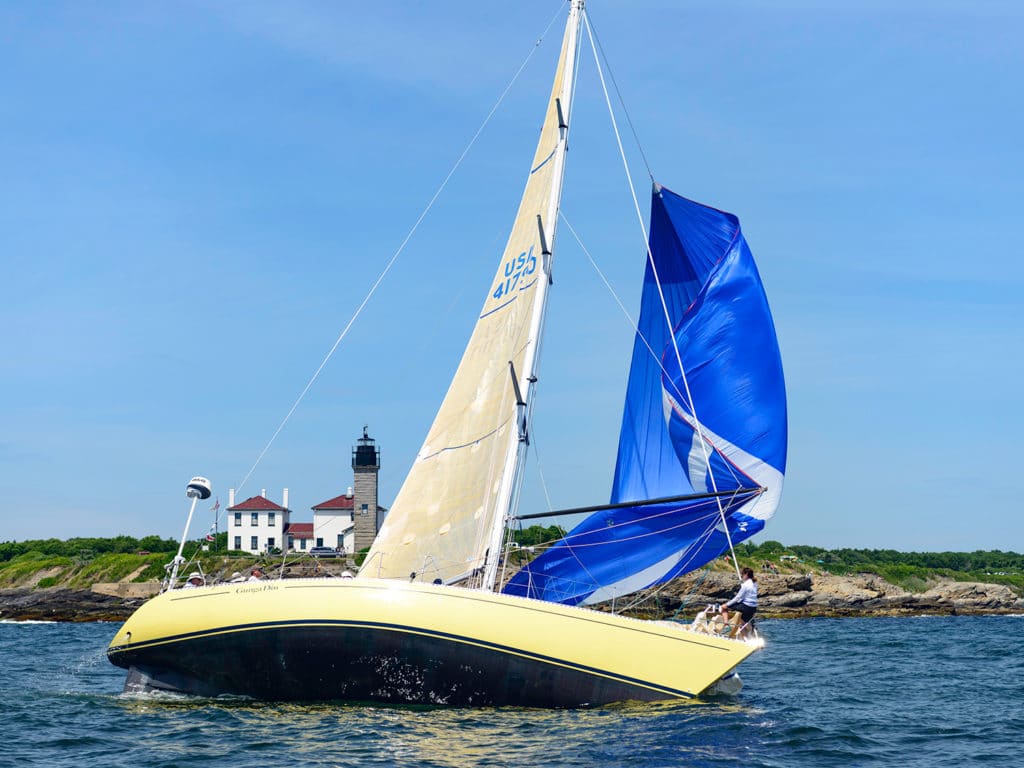
Dear Doctor Crash,
The skipper and crew of Gunga Din thank you for the lovely photograph of our vessel at zero velocity due to contact with a rock off Beavertail Point in Narragansett Bay, Rhode Island.
Needless to say, Gunga Din‘s placement on that rock was a total navigational error, not an iota of blame on the [New York YC] Race Committee, which did a phenomenal job during the 175th Annual Regatta, which was remedied in a matter of minutes.
As soon as the vessel went from 5 to zero knots, thanks to contact with the rock, the crew panicked and started lowering sail. The skipper, having grounded a number of times on sand in the Bahamas (primarily on the way to Spanish Wells where channel markers are frequently moved by the locals), remembered how important it is to hoist sails and heel the boat, as opposed to dropping sail, which would give it an 8-foot draft as opposed to a 3-foot draft when heeled. After reluctance on the part of the crew to follow the skipper’s orders, the spinnaker was hoisted back to the top of the mast, the sheets were strapped in and the vessel sailed off with considerably less draft than eight feet.
The next morning, a diver inspected the minor damage to the keel, patched it underwater with waterproof compound and the vessel sailed in the next races. Upon hauling the vessel after a week or so, inspection showed minimal, if any, damage to the keel.
The vessel is a Lloyd’s certified Sweden Yachts 41, built in 1988. Other vessels, particularly the more racing oriented boats might have left their keels behind on the rock.
While we don’t plan to stop on rocks in the future, it does show the quality of construction and the importance of heeling the vessel as opposed to lowering sail and increasing draft.
Sincerely yours,
The Skipper
Dayton T. Carr









